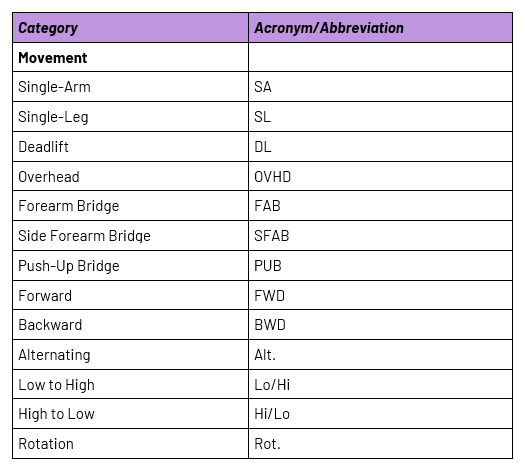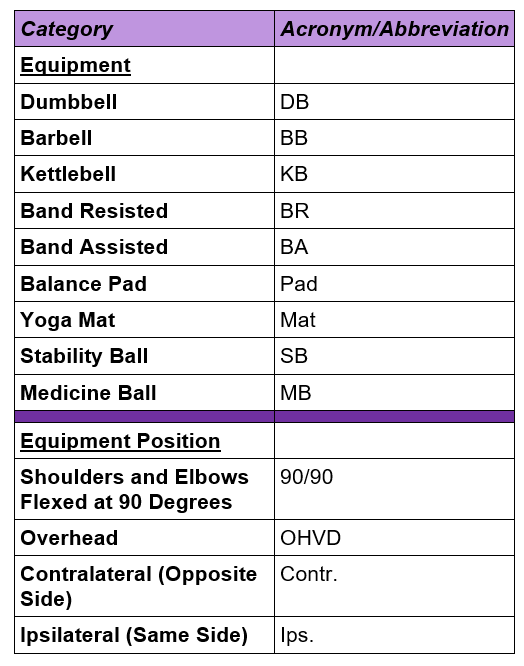
As much as you would like to coast through your workouts and let your trainer tell you what the next exercise is and what weights to put on the bar, it would be good to understand what some common abbreviations are when us trainers write your workouts. Why? Guess what, you can't take your trainer on your trip to Bora Bora (is that how you write that?). And if they send you a workout plan for while you're away and write something like "SL DB Squat" and you think he meant "Side Lying Dorsal-Fin Band Squat", you're going to be in trouble. Below, you'll find the most common abbreviations and acronyms us trainers use to communicate exercise. I've also included tempo notation. Don't roll your eyes. You'll thank me later.
Common Acronyms
Here are some common acronyms I use in various situations. Also, I’ve added abbreviations to common words that help us coaches and trainers cut down on our wording when we write exercises.



Tempo Notation
The tempo of any exercise is the pace at which you descend, ascend, and pause at specific points within an exercise. All of these aspects of an exercise are synonymous with a particular muscle action.
- Eccentric muscle action is the lengthening of a muscle. This coincides with the descension, or negative of an exercise.
- Concentric muscle action is the lengthening of a muscle. This coincides with the ascension of an exercise.
- Isometric muscle action is the contraction (production of force) of a muscle where there is no change in muscle length. If you push on a wall that you aren’t strong enough to move, all of your muscle actions will be isometric because you’re producing force but your joints are stationary. This coincides with the pauses in an exercise. If you pause at the bottom of a squat, you’re still producing force, but you’re not moving the weight.
There are two pauses in any exercise. The pause after you’ve descended, and the pause once you’ve reached the top of the exercise.
If you watch me during this DB SL Hinge - Rear Foot Elevated, you’ll see each of these aspects of the tempo occurring.
Here is tempo notation, in all of its glory. If you ever see this in your workouts from now on, you won’t be confused!
